Air plants, also known as Tillandsia, are a unique type of plant that can grow and thrive without soil. They are popular indoor plants that are easy to care for and come in various shapes and sizes.
But, are air plants toxic?
Well, it’s important to know whether or not air plants are toxic to humans and pets before bringing them into your home. In short, air plants are not poisonous, but they do carry some toxins which may cause skin irritation and or other issues if ingested.
In this article, we will provide information on the different types of air plants, their toxicity levels, and how to safely handle and care for them.
We will also answer some commonly asked questions about air plants and provide tips for keeping them healthy. By the end of this article, you’ll better understand air plant safety and enjoy these fascinating plants in your home without worry.
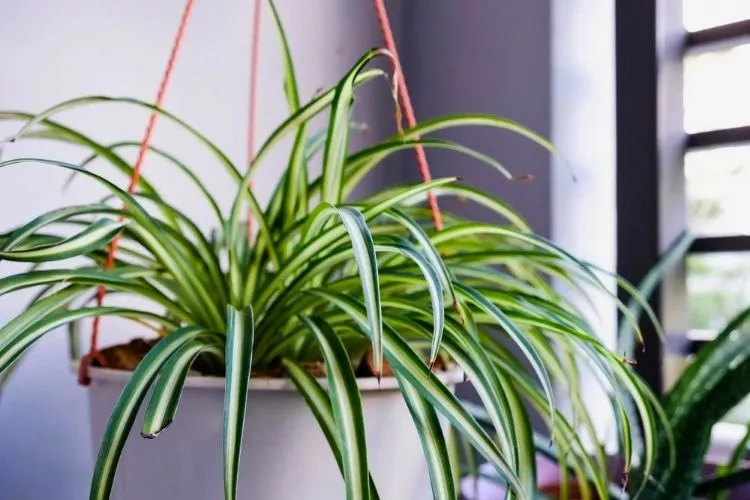
Table of Contents
Types of Air Plants
Air plants are part of the Bromeliaceae family and are native to Central and South America. They come in many different shapes and sizes; some are small enough to fit in the palm of your hand, while others can grow to be several feet tall.
Some of the most popular types of air plants include Tillandsia ionantha, Tillandsia xerographica, and Tillandsia caput-medusae.
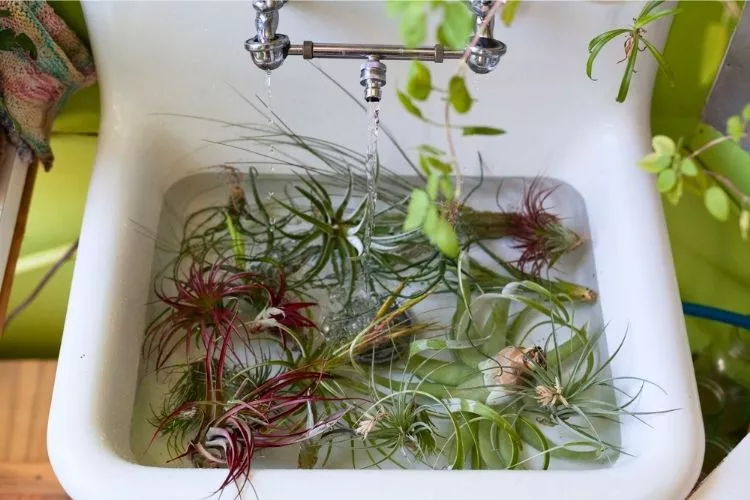
- Tillandsia ionantha: a small air plant with green leaves that turn red when it blooms.
- Tillandsia xerographica: has a large, rosette shape with curly leaves
- Tillandsia caput-medusae: has a distinctive shape that resembles a jellyfish.
Each air plant has special characteristics and can be a unique addition to your collection.
Common Uses of Air Plants
Air plants are popular for their unique appearance and ability to grow without soil. They can be used for various purposes, including indoor decoration and terrariums. Air plants are often used in hanging displays or mounted on driftwood or other natural objects.
They can also be incorporated into living walls and other vertical gardens. In addition to their aesthetic appeal, air plants are also used for air purification and are believed to positively affect indoor air quality.
How to Identify Air Plants?
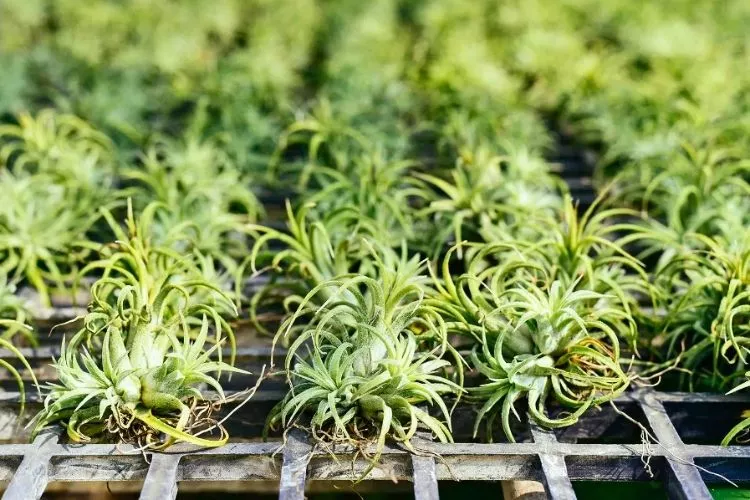
Identifying air plants can be tricky, as they come in many different shapes and sizes. One way to identify an air plant is by its appearance. Air plants usually have long, thin leaves that are soft.
Some air plants have brightly colored leaves or bloom in various colors. Another way to identify air plants is by their growth habit.
Air plants typically grow on other objects, such as tree branches, rocks, or other plants. They do not have roots that grow into the soil like traditional plants. By understanding air plants’ appearance and growth habits, you can easily identify them and add them to your collection.
Are Air Plants Toxic? (A Clear Answer)
While air plants are not poisonous, some air plants contain toxins that can cause skin irritation or other health problems if ingested. It is important to handle air plants carefully and keep them out of reach of pets and children.
Let’s have a look at how certain animals fare when coming into contact with or ingesting parts of an air plant.
Are Air Plants Toxic to Cats?
While air plants are generally safe for cats, some air plants can be toxic to them. If ingested, air plants containing toxins such as calcium oxalate crystals can cause various symptoms, including vomiting, diarrhea, and difficulty breathing.

It is important to keep air plants out of cats’ reach and monitor them closely if they come into contact with air plants.
Are Air Plants Toxic to Dogs?
Similarly, air plants are not considered toxic to dogs, but some air plants may be harmful to them. Ingestion of air plants that contain toxins can cause a range of symptoms in dogs, including vomiting, diarrhea, and difficulty breathing.
As with cats, it is important to keep air plants out of reach of dogs and to seek veterinary care immediately if any symptoms of toxicity are observed.
Are Air Plants Toxic to any other pets?
While air plants are generally safe for most pets, some air plants may be toxic to other animals, such as birds, rabbits, and guinea pigs. It is important to research the toxicity levels of any plants before introducing them into a home with other pets.
If you have any concerns about the safety of air plants for your specific pet, it’s always best to consult a veterinarian for advice.
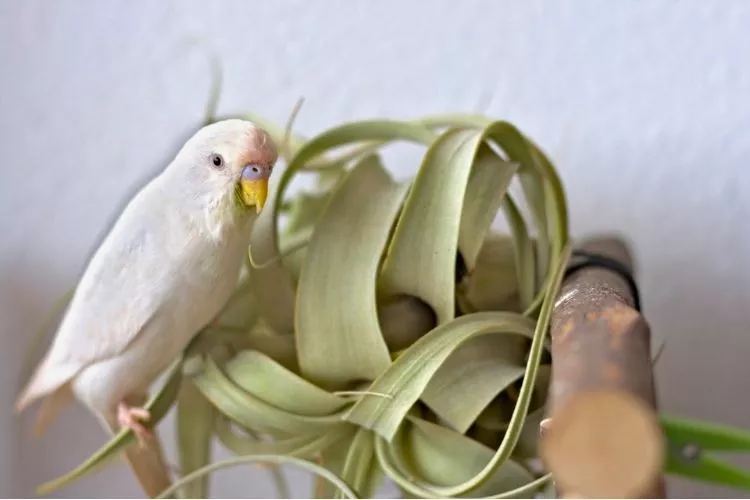
Toxicity of Air Plants
Air plants are not generally considered toxic, but some air plants contain toxins that can cause health problems if ingested. In this next section, we’ll have a really good deep dive into some important points to consider when it comes to air plant toxicity:
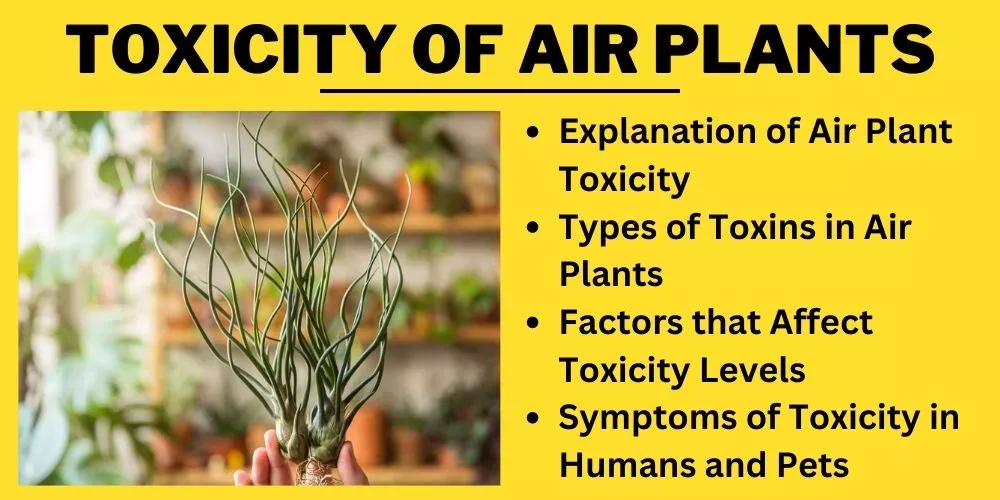
Explanation of Air Plant Toxicity
Air plants have the potential to contain natural toxins that cause skin irritation issues as well as a range of other more serious health problems if certain amounts are ingested. While toxicity levels can vary depending on the species of air plant, it is vital to always handle them with care.
Types of Toxins in Air Plants
One of the most common toxins in air plants is calcium oxalate crystals. These crystals can cause irritation or burning in the mouth and throat if ingested and may also cause skin irritation.
Other types of toxins, such as phenols, terpenes, and alkaloids, can be found in the sap or other parts of the plant.
Factors that Affect Toxicity Levels
The toxicity level of an air plant can depend on several factors, including the species of the plant and the amount ingested. Some species of air plants are more toxic than others, and a larger amount ingested can lead to more severe symptoms.
Symptoms of Toxicity in Humans and Pets
Symptoms of air plant toxicity can vary depending on the severity of the exposure.
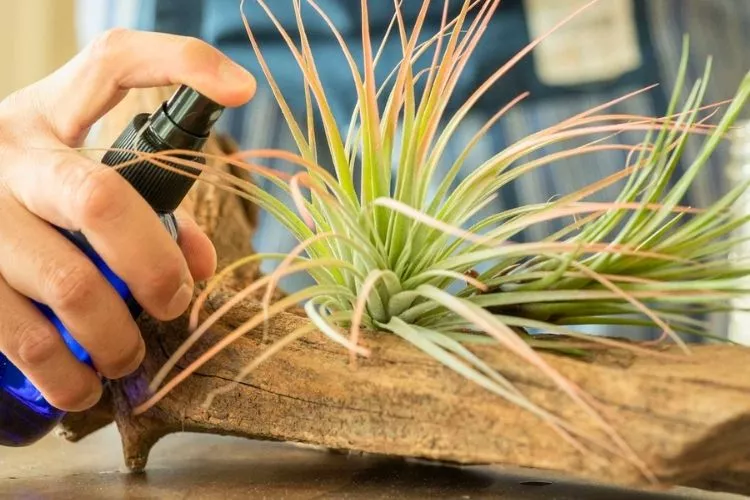
In humans, symptoms may include:
- Skin irritation
- Burning in the mouth and throat
- Difficulty breathing.
In pets, symptoms can include:
- Vomiting
- Diarrhea
- Difficulty breathing.
If you suspect that you or your pet may have come into contact with a toxic air plant, it’s important to seek medical attention immediately.
Understanding the potential for air plant toxicity allows you to take the necessary precautions to keep yourself and your pets safe. Be sure to handle air plants carefully and keep them out of reach of children and pets.
Suppose you are unsure about the safety of a specific air plant species. In that case, it’s always best to research and consult with a professional before introducing it into your home.
Non-Toxic Air Plants
While some types of air plants contain toxins that can cause health problems in humans and pets, there are also a few non-toxic species of air plants that are safe to keep in your home.
These non-toxic air plants can be a great choice for pet owners or anyone who wants to enjoy the beauty and benefits of air plants without worrying about potential toxicity.
Some of the most common Non-Toxic Air plants include:
- Tillandsia cyanea
- Tillandsia capitata
- Tillandsia aeranthos
- Tillandsia ionantha
- Tillandsia xerographica
- Tillandsia stricta
- Tillandsia funckiana
Why are some Air Plants Non-Toxic?
Some air plants are non-toxic because they do not contain harmful toxins like calcium oxalate crystals or other natural toxins. While all plants contain some degree of toxins, non-toxic air plants generally have lower levels of toxicity that are not harmful to humans or pets.
Benefits of Non-Toxic Air Plants
Non-toxic air plants can offer all of the same benefits as toxic air plants without the risk of harm to pets or people. Air plants are known for their air-purifying properties, and they can help to improve indoor air quality and reduce the presence of pollutants.
They are also easy to care for and can be a beautiful and unique addition to any home or garden. By choosing non-toxic air plants, you can enjoy all of these benefits without worrying about the potential for toxicity.
How to Handle Air Plants Safely?
To ensure safety for yourself and your pets when handling air plants, it’s important to take a couple of extremely necessary precautions and follow safe handling and care guidelines. Let’s have a look at some simple precautions to keep in mind:
- Always wear gloves to protect your skin from toxins or irritants when handling air plants. Furthermore, try not to rub your eyes or touch your face while handling air plants, which can lead to skin irritation or other health problems. Avoid ingesting any part of an air plant at all costs.
- When it comes to planting safety, it’s important to rinse them thoroughly in water and let them dry completely before placing them back in their holder or container. This method is known as ‘soaking.’ Doing so will ensure that they don’t dry out unnecessarily. Additionally, avoid overwatering or underwatering these plants, as these sloppy maintenance practices will stress them, and they will die.
- When disposing of air plants, it’s important to consider how to do so. Avoid composting or burning them; this will release toxins into the air and has the potential to spread. Instead, you can dispose of air plants by placing them in a sealed plastic bag and throwing them away in the trash.
Frequently Asked Questions (FAQs)
Can air plants cause skin irritation?
Yes, some air plants contain toxins that can cause skin irritation. They should be handled with care. In some cases, protective personal protective equipment may be necessary.
Can air plants cause respiratory problems?
In rare cases, air plants can cause respiratory problems for individuals with allergies or asthma. However, it’s always a good idea to do thorough research on the particular type of species that you wish to handle or plant. Better safe than sorry!
Do air plants need fertilizer to thrive?
While air plants don’t necessarily need fertilizer to thrive, a balanced, diluted fertilizer can benefit their growth and health. Some plants don’t get enough food from their environment and can gain a good pep up from some supplementary help.
Conclusion:
In summary, understanding the potential for toxicity in air plants is vital for the safety of both humans and pets. By choosing non-toxic air plants and following safe handling and care guidelines, you can enjoy the beauty and benefits of these unique plants without any risks.
It’s always a good idea to research any new plant before bringing it into your home to ensure that it’s safe and suitable for your specific environment.
We hope this guide has helped provide you with the information you need to enjoy air plants safely and responsibly. For more helpful tips and information, check out our website. Thank you for reading, and happy gardening!


